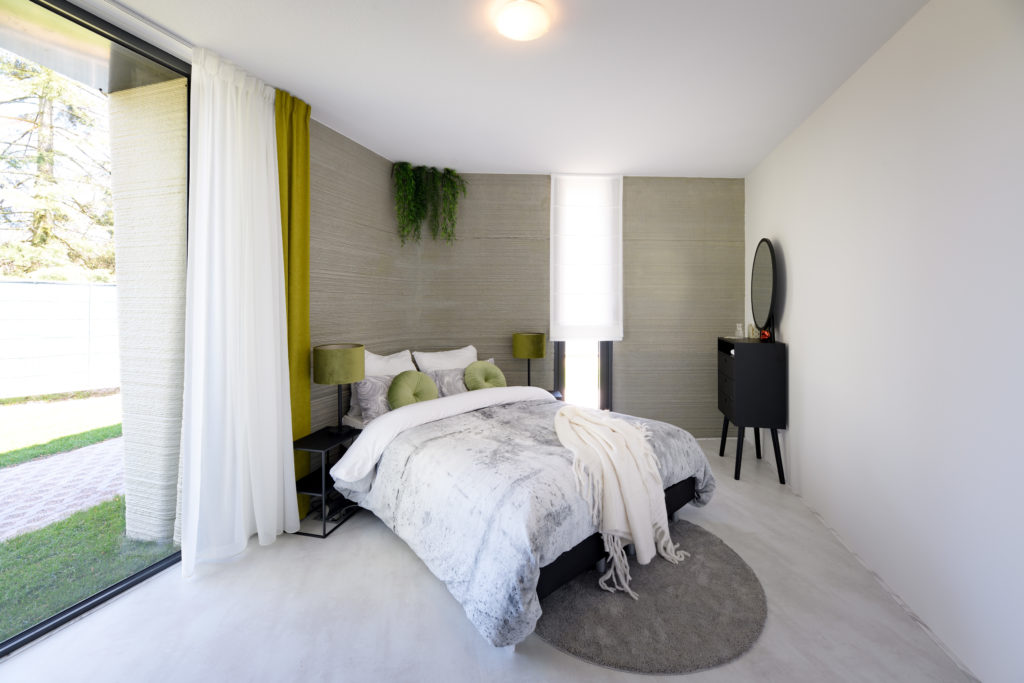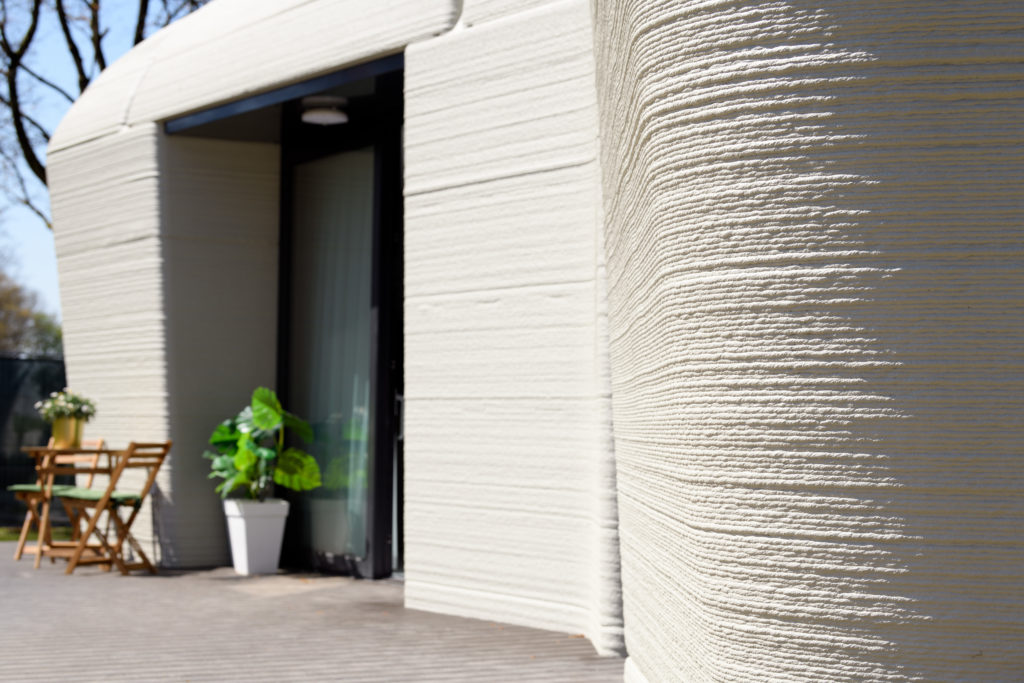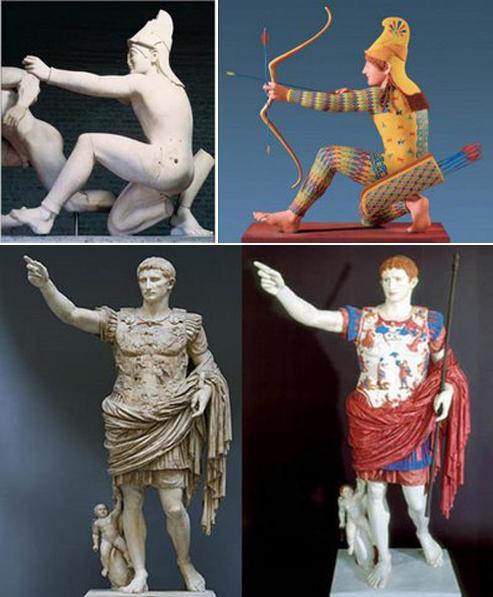There is now an occupant of the world’s first 3D printed home. Built in Eindhoven, the Netherlands, the home has been made to conform with Dutch regulations for buildings. The house is a part of Project Milestone, five 3D printed homes made by a consortium comprising of the Eindhoven University of Technology, construction company Van Wijnen, concrete giant Saint-Gobain Weber Beamix, real estate investor Vesteda, the city of Eindhoven, and engineering firm Witteveen+Bos.

Eerste bewoonde 3D-betongeprinte woning van Project Milestone in Bosrijk, Eindhoven van oa Theo Salet TU/e
The partners worked together using a Triple Helix methodology that sees the government fund research that is commercialized by universities and then companies. In this case, the city wanted the project and the technical university developed the technology, while Saint-Gobain Weber Beamix developed the concrete and aided in commercializing the technology. Witteveen+Bos dealt with the technical development of the home, Van Wijnen is the builder, while Vesteda owns the house and rents it out.

The one story home is 94 square meters and has two bedrooms. It is made of 24 3D printed concrete elements that are made in a factory, not printed on location. The forms were trucked into the location and placed on existing foundations. Subsequently, the roof windows and other elements were added using traditional methods.
It’s situated in the Bosrijk neighborhood and is meant to look like a boulder. The boulder shape was chosen so that the home would both showcase the design freedom of 3D printed concrete and fit well into its surroundings. A significant step was the use of leaning walls and round forms that could change how homes look in the future. The consortium wants to encourage personalized design, in effect letting homeowners and tenants mass customize their homes before they are built. The companies also state that this form of building is faster than traditional building methods and uses less concrete.

“With a 3D printed home we’re setting the tone for the future. The rapid realization of affordable homes with control over the shape of your own home. Innovation and discovery with an eye for design, is in Eindhoven’s DNA. We don’t do this by ourselves here, but together. I am proud that this promising innovation has a place in our city and, more importantly, gives people an affordable home,” Eindhoven city council member Yasin Torunoglu states.

”With this small building, the first major step has now been taken in the development of construction into a high-quality manufacturing industry. Digitization from design to implementation leads to sustainable and affordable homes, tailor-made to the wishes of the resident. I am proud that the knowledge we have developed at TU/e has led to this innovation,” Theo Salet, Professor of Concrete Structures, Eindhoven University of Technology, said.
I’m a 3D printed house skeptic on the whole. A lot of 3D printing house startups have engaged in over-claim or told outright lies. I am also still doubtful that we can really save a lot of money or truly change things with current stage technology and thinking. Previously, I wrote an article on Stoffwechsel and 3D Printing in Architecture where I go deeper into this subject.

Roman statues were polychromatic but “some conservators removed pigment and paint spots from Roman and Greek statues. So convinced were they that these were meant to be white that they took scalpels to historical evidence so that the statue would conform to their idea of them. We still do this. In 3D printing houses, we are trying to recreate past shapes with new technology. A drawing and idea become the jumping off point to developing a technology. Brick houses, ideas and patterns are being made with 3D printing. The old paradigm is still in the driving seat esthetically, as is the old way of doing things. There are a lot of renderings and overclaim in the 3D printing houses business, and not a lot of actual buildings,” I noted.
On the one hand, this three-year-old quote still rings true. We’re using old methods and thinking to design with a new tool. A self-supporting cone-like shape, for example, 3D printed in a spiral is very much a type of form that would lend itself better to 3D printing than many of the futuristic-looking, backward-thinking 3D printed houses. They display Jetsons aesthetics, but the minds of architects are clearly rooted in the methods of the past.
But, we are making progress. In this case, a cross-section of many of the stakeholders in constructing new buildings are embarking on a project to demonstrate the building of homes, not soulless concrete carcasses that are meant to last the duration of the news cycle. By working with many stakeholders and building a residential home that is up to code this is real progress.
At the same time, this project does inform us that this is an affordable home and that is will help with housing shortages. As Michael has pointed out in this excellent article, we should also be skeptical about those claims, however.
Subscribe to Our Email Newsletter
Stay up-to-date on all the latest news from the 3D printing industry and receive information and offers from third party vendors.
Print Services
Upload your 3D Models and get them printed quickly and efficiently.
You May Also Like
Heating Up: 3D Systems’ Scott Green Discusses 3D Printing’s Potential in the Data Center Industry
The relentless rise of NVIDIA, the steadily increasing pledges of major private and public investments in national infrastructure projects around the world, and the general cultural obsession with AI have...
Formlabs Teams Up with DMG MORI in Japan
In late June, Nick Graham, Chief Revenue Officer at Formlabs, announced on LinkedIn that the company had partnered with DMG MORI, one of the world’s leading machine tool companies, to...
EOS in India: AM’s Rising Star
EOS is doubling down on India. With a growing base of aerospace startups, new government policies, and a massive engineering workforce, India is quickly becoming one of the most important...
3D Printing News Briefs, June 25, 2025: R&D Materials, 3D Printed Veneers, & More
In today’s 3D Printing News Briefs, 3DXTECH has launched a program that gives customers early access to experimental materials, and the first Lithoz CeraFab Multi 2M30 in the Czech Republic...



































